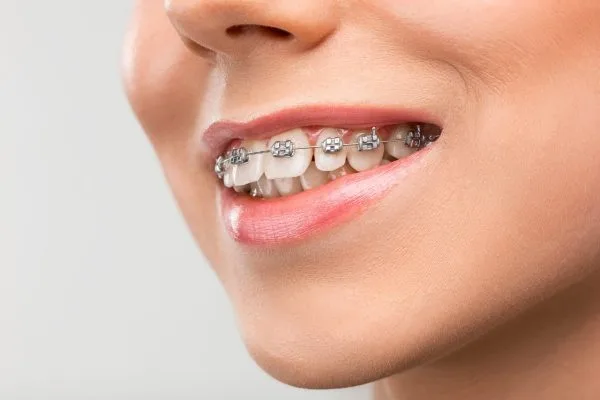
Braces represent a transformative tool in modern orthodontic care, offering individuals the opportunity to achieve straighter teeth, improved bite alignment, and enhanced oral health. Understanding the purpose, types, process, benefits, and aftercare associated with braces can empower patients to embark on a journey towards a confident and radiant smile.
Table of Contents
ToggleWhat Are Braces?
Braces are orthodontic devices designed to correct misaligned teeth and bite issues by applying gentle pressure to move teeth into their proper positions. They consist of several components, including brackets, archwires, bands, and sometimes more accessories like elastics or springs. Braces address various orthodontic concerns, such as overcrowding, gaps between teeth, overbites, underbites, and crossbites.
Types of Braces:
- Traditional Metal Braces: Made of high-grade stainless steel, traditional metal braces feature metal brackets attached to each tooth connected by an archwire. They are effective and suitable for correcting a wide range of orthodontic issues.
- Ceramic Braces: Ceramic braces offer a more discreet alternative to traditional metal braces. The brackets are made of tooth-colored ceramic material that blends with natural teeth, making them less noticeable.
- Lingual Braces: Lingual braces are like traditional metal braces but are attached to the back surface of the teeth, making them invisible from the front. They provide effective treatment while offering a more pleasing option.
- Clear Aligners: Clear aligners, such as Invisalign, are removable plastic trays customized to fit over the teeth. They shift teeth into alignment and offer the advantage of being invisible, comfortable, and convenient for eating and oral hygiene.
The Braces Process:
- Consultation: The orthodontist evaluates the patient’s dental health and discusses treatment goals and options. X-rays, photographs, and impressions may be taken to create a personalized treatment plan.
- Placement: Braces are bonded to the teeth using dental adhesive. Archwires are then threaded through the brackets and secured in place with elastic ligatures or other fastening mechanisms.
- Adjustments: Periodic adjustments are scheduled to tighten the braces and apply incremental pressure to move the teeth . These adjustments are crucial for achieving optimal results and may cause mild discomfort that subsides .
- Monitoring Progress: Regular check-ups allow the orthodontist to check progress, make any necessary modifications to the treatment plan, and address any concerns or discomfort experienced by the patient.
Benefits of Braces:
- Improved Smile Aesthetics: Braces straighten misaligned teeth, correct bite issues, and enhance the appearance of the smile.
- Enhanced Oral Health: aligned teeth are easier to clean, reducing the risk of tooth decay, gum disease, and other oral health problems.
- Optimized Bite Function: Correcting bite alignment issues improves chewing efficiency and reduces the risk of jaw pain or dysfunction.
- Boosted Confidence: A straight, beautiful smile can boost self-esteem and confidence, impacting personal and professional relationships.
Aftercare and Maintenance:
- Maintain Good Oral Hygiene: Brushing, flossing, and using interdental brushes or water flossers are essential for keeping teeth and braces clean and healthy.
- Follow Dietary Guidelines: Avoid hard, sticky, or sugary foods that could damage braces or increase the risk of tooth decay.
- Attend Regular Appointments: Adhering to scheduled orthodontic appointments ensures proper monitoring of progress and timely adjustments to treatment.
- Wear Retainers: After braces are removed, wearing retainers as directed by the orthodontist helps maintain the new tooth positions and prevent relapse.
In conclusion, braces offer a comprehensive solution for achieving a straighter, healthier smile and addressing various orthodontic concerns. With advancements in orthodontic technology and materials, patients can choose from a variety of braces options that suit their preferences and lifestyle. By understanding the braces process, types, benefits, and aftercare recommendations, individuals can embark on a rewarding journey towards a confident and radiant smile.